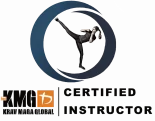FAQ
Do I have to be physically fit before participating in your courses?
Absolutely not. In fact, many people come to us precisely to improve their fitness. We’ve had participants who started with very little fitness, and already after a few weeks, significant progress was made that continues to this day. We also make it clear to all our participants that our courses are not about competing with others; instead, everyone follows their own path, at their own pace, and according to their own abilities.
What kind of people join your training, and what’s the atmosphere like?
Attending a self-defense course for the first time can be intimidating for many, especially since some training environments are known for having too much testosterone and ego in the air. However, we are proud that our courses are known for their warm and welcoming atmosphere. Even experienced participants are always ready to help newcomers.
We train people from all walks of life, age groups, and professions: doctors, educators, police officers, students, mothers and daughters, seniors, scientists, and more.
What is the difference between martial arts and self-defense?
The main difference lies in the applicability of techniques and tactics in real, chaotic situations. Krav Maga is not a martial art but a practical and easy-to-learn self-defense system focused on effectiveness and functionality. Unlike martial arts, Krav Maga deliberately avoids fixed rules, as attackers in real-life situations do not adhere to any. It intentionally exploits the weaknesses of the attacker and includes many highly effective “dirty fighting” techniques, such as targeting the groin or the eyes.
While martial arts often require long-term training, Krav Maga is designed to enable even people without prior experience to defend themselves in the shortest time possible. Here’s a comparison of reality-based self-defense versus regulated martial arts:
Dojo & Martial Arts
Goals: Scoring points in competitive sports, earning belts and ranks, improving fitness.
Clear Rules: Ensuring fairness in competition, which prohibits dangerous techniques effective in street combat.
Structured Environment: Ideal conditions in the ring or training hall—soft mats, familiar surroundings, matching weight classes, scheduled events. No weapons or tools allowed, and matches are overseen by coaches or referees.
What’s at stake: At most, a medal. Even if you loose, you survive and may at worst be knocked out.
Self-Defense
Goals: Defend yourself by any means necessary to return home alive and as unscathed as possible.
No Rules: Anything that works is permitted—for example, using a car key to stab an assailant in the eye or delivering knee strikes or “volleyball” hits to the groin.
Unique Challenges: Attacks usually occur unexpectedly, often by physically stronger assailants with more street experience. Scenarios may involve multiple attackers, weapons (e.g., broken bottles, knives), and numerous unpredictable variables (slippery surfaces due to rain or ice, dangerous settings like stairs or moving vehicles, poor lighting, tight spaces like elevators, etc.). Ground fighting should be avoided, especially in cases of sexual violence (due to unstable surfaces, third-party interference, or weapons).
What’s at stake: It’s about physical and emotional safety, control over your own body, and, in some cases, a fight for life and death.
I’m a petite woman. Can I really defend myself against a physically stronger man?
Absolutely – we’ll show you what you’re capable of! Krav Maga is specifically designed to act from a position of disadvantage. That’s why it’s the ideal self-defense system for women. By specifically exploiting the attacker’s weaknesses and using all available means, women learn to protect themselves even against physically stronger opponents.
Imagine a little kitten – if that kitten were to jump at your eyes with its claws out, hissing and ready to fight, the combination of precision, agility, and determination would be enough to make even a strong attacker back off.
We know that women unfortunately often find themselves in a variety of situations where their safety is threatened – from verbal harassment to physical assaults. As a holistic concept, Krav Maga provides solutions ranging from strategies for non-violent boundary setting to uncompromising defenses against sexual assaults. One of Krav Maga’s key strengths is developing situational awareness, recognizing predator tactics, and employing a wide range of de-escalation techniques. All of this empowers women to move through the world feeling safe and confident.
What should I bring for the training sessions?
You generally only need sportswear (although we also regularly train in everyday clothing) and drinking water the breaks. The training equipment (such as pads, helmets, etc.) is provided by us. If you’re committed to training for a long period of time, it might be a good idea to invest in additional personal protective gear, such as a groin guard or boxing gloves.
What is the risk of injury?
Despite our focus on practical, reality-based self-defense, our courses are not only taught in an entertaining way, but above all with the utmost care to ensure a safe environment for all participants. Our instructors have decades of experience and know how to take the necessary safety precautions. We have also had neurosurgeons, musicians or actors training with us, so preventing injuries is our top priority.
Anyone with special concerns about injuries or with physical limitations can also book our private lessons, where we can precisely tailor the program to your individual needs.
